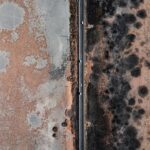Roof leaks are a common problem faced by many homeowners. They can lead to extensive damage, and costly repairs, and even pose a threat to the safety of those living in the house.
Prevention is always better than cure when it comes to roof leaks. So, it’s important to understand their causes and take necessary precautions to avoid them.
In this document, we will discuss 8 common causes of roof leaking and how you can prevent them.
1. Poor Installation
Improper installation of the roofing system can lead to problems like leaks. This could be due to:
- improper nailing
- incorrect shingle placement
- inadequate sealing
Roof leaks provide moisture and warmth, creating an ideal environment for mold growth. If not addressed promptly, molds can spread and cause structural damage to the house. If already dealing with molds, contact professional services like Elite Mold Services immediately and have it addressed.
Ensuring the installation process is handled by roofing experts is crucial to prevent such issues. A professional roofer has the expertise to correctly install the roofing system with attention to every detail. Before you choose a roofing contractor, make sure to do some research. Ask for references and confirm their licenses and insurance.
2. Damaged Shingles
Shingles can get damaged due to various reasons like harsh weather conditions, falling debris, or simply aging. Cracked, curled, or missing shingles can expose your roof to water damage, leading to leaks.
Regular roof inspections can help detect shingle damage early and prevent roof leaks. If you notice any signs of damaged shingles, such as granules in the gutter or visible signs of curling or cracking on the roof, it’s best to contact roofing services immediately.
They can assess the extent of the damage and recommend appropriate solutions, whether that’s repairing specific areas or replacing the entire roof, depending on the severity of the damage.
3. Clogged Gutters
When leaves, twigs, or other debris accumulate in the gutters, it obstructs the flow of water, causing it to back up and seep into the roof structure, thus leading to leaks. Regular cleaning and maintenance of gutters are essential for roof leak prevention.
It is advisable to clean your gutters at least twice a year, especially during fall and spring when leaf fall is at its peak. Additionally, consider installing gutter guards to prevent debris accumulation. If your gutter system is old and frequently clogged, it may be time to consult with experts for a possible replacement.
4. Improperly Sealed Roof Valleys
A roof valley is the angled intersection where two roof slopes meet. If not sealed effectively, water can infiltrate these intersections, leading to leaks. Roof valleys need to be protected with a combination of roofing cement and metal flashing for optimal protection.
It’s imperative to regularly inspect these areas for signs of wear and tear, such as cracks in the sealant or rusting of the metal flashing. If you identify any such issues or suspect a leak, get in touch with experts who can thoroughly examine the valleys, ascertain the exact cause of the problem, and fix it efficiently to prevent further leaks.
5. Cracked Flashing
Flashing is a thin piece of metal installed at the joints of your roof to prevent water seepage. Over time, flashing can crack due to exposure to weather elements, or the sealant used can wear off, leaving your roof vulnerable to leaks. Regularly checking the condition of your flashing is key for roof leak prevention.
If you notice any signs of damage, such as rust, cracks, or loose parts, it’s imperative to contact roofing experts without delay. They can assess the damage and replace or repair the flashing as needed. Properly installed and maintained flashing can serve as an excellent defense against water intrusion, protecting your home from potential roof leaks.
6. Ice Dams
Ice dams are a major cause of roof leaks, especially in regions prone to freezing temperatures. These are formed when melted snow on a warm part of the roof refreezes at the roof’s cold edge, creating a dam that prevents water from draining off the roof. The backed-up water then seeps under the shingles, leading to leaks inside the house.
Prevention of ice dams involves improving attic insulation and ventilation, thus keeping the entire roof at a constant temperature and preventing the refreezing cycle. It’s also recommended to remove snow from the roof after heavy storms.
However, ice dam removal can be a risky task for homeowners and is best left to the experts.
7. Tree Damage
Overhanging tree limbs can scrape the surface of the roof, damaging its protective layer and leading to leaks. In severe weather conditions, these limbs can break off and fall onto the roof, causing significant damage. Moreover, leaves falling from overhanging branches can accumulate and block gutters, leading to water backup and further leaks.
To prevent tree-related damage, it’s essential to regularly trim any overhanging branches and remove leaves and other debris from the roof. If you have large trees close to your house that pose a risk, consider consulting with a professional arborist.
Regular maintenance and inspections conducted by experts can also help identify and address any potential issues related to tree damage.
8. Wear and Tear
Just like everything else, roofs are subject to general wear and tear over time. Natural aging can lead to the deterioration of your roofing materials, causing slow but steady damage. Worn-out roof components can develop tiny cracks and gaps, which can gradually grow, leading to leaks.
Aging signs can include loss of granulation on shingles, fading color, curling or buckling shingles, and sagging areas. Regular roof inspections by roofing services can help detect early signs of wear and tear.
Furthermore, maintaining a proactive roof care routine – such as cleaning debris from the roof, keeping gutters clean, ensuring proper attic ventilation, and patching minor issues promptly – can slow down the wear and tear process.
However, once a roof reaches its life expectancy, repairs may not suffice, and a roof replacement could be the most effective solution to prevent roof leaks.
Prevent These Common Causes of Roof Leaking Now
In conclusion, understanding these common causes of roof leaking can help you take necessary precautions to prevent them. Regular maintenance and inspections by qualified roofing experts can also play a crucial role in catching potential issues before they turn into expensive repairs. Don’t wait until it’s too late – take proactive measures to protect your home from roof leaks today.
Did you find this article helpful? Check out the rest of our blog.




